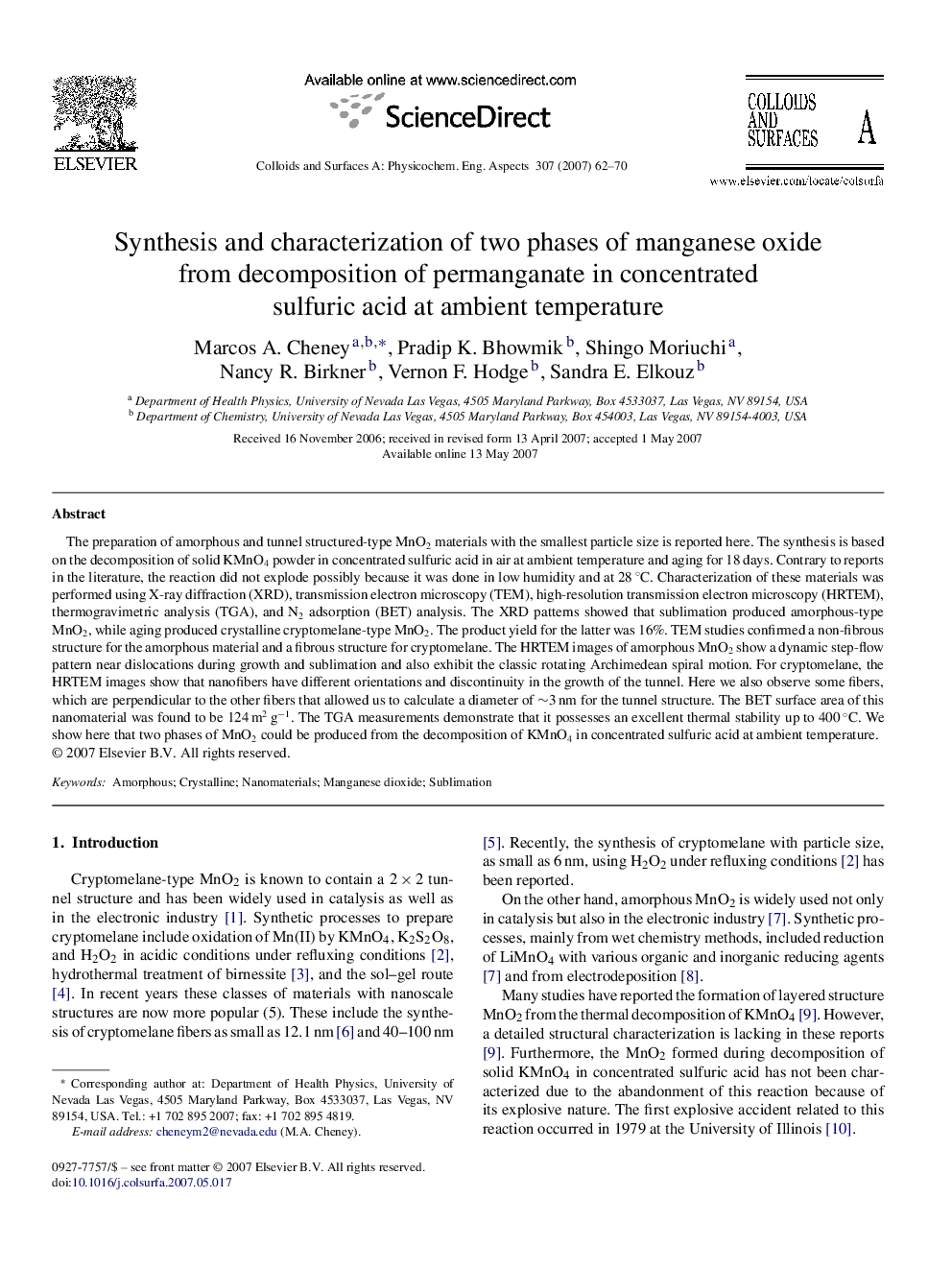| Article ID | Journal | Published Year | Pages | File Type |
|---|---|---|---|---|
| 597228 | Colloids and Surfaces A: Physicochemical and Engineering Aspects | 2007 | 9 Pages |
The preparation of amorphous and tunnel structured-type MnO2 materials with the smallest particle size is reported here. The synthesis is based on the decomposition of solid KMnO4 powder in concentrated sulfuric acid in air at ambient temperature and aging for 18 days. Contrary to reports in the literature, the reaction did not explode possibly because it was done in low humidity and at 28 °C. Characterization of these materials was performed using X-ray diffraction (XRD), transmission electron microscopy (TEM), high-resolution transmission electron microscopy (HRTEM), thermogravimetric analysis (TGA), and N2 adsorption (BET) analysis. The XRD patterns showed that sublimation produced amorphous-type MnO2, while aging produced crystalline cryptomelane-type MnO2. The product yield for the latter was 16%. TEM studies confirmed a non-fibrous structure for the amorphous material and a fibrous structure for cryptomelane. The HRTEM images of amorphous MnO2 show a dynamic step-flow pattern near dislocations during growth and sublimation and also exhibit the classic rotating Archimedean spiral motion. For cryptomelane, the HRTEM images show that nanofibers have different orientations and discontinuity in the growth of the tunnel. Here we also observe some fibers, which are perpendicular to the other fibers that allowed us to calculate a diameter of ∼3 nm for the tunnel structure. The BET surface area of this nanomaterial was found to be 124 m2 g−1. The TGA measurements demonstrate that it possesses an excellent thermal stability up to 400 °C. We show here that two phases of MnO2 could be produced from the decomposition of KMnO4 in concentrated sulfuric acid at ambient temperature.
